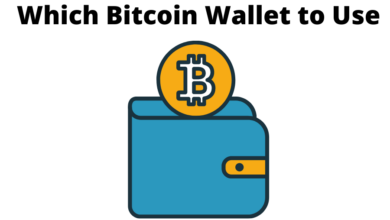The Impact of Regulatory Changes on Stablecoin Liquidity Pools
Exploring the complex interplay between regulatory changes and stablecoin liquidity pools, this article delves into the evolving landscape of digital currencies. We examine how new regulations are reshaping the stability and functionality of these essential components in the cryptocurrency ecosystem. Click this image below to start bitcoin trading. It acts as an “intermediary” and facilitates access to investment content.

Regulatory Changes and Their Impacts
The landscape of cryptocurrency, particularly stablecoins and their associated liquidity pools, has been significantly influenced by recent regulatory changes. These changes, often driven by concerns over financial stability, consumer protection, and money laundering, have brought a new level of scrutiny and compliance requirements to the sector.
As governments and financial authorities worldwide begin to understand the implications of digital currencies, they are actively working to create frameworks that ensure these assets operate within the bounds of traditional financial oversight. This shift has been particularly impactful for stablecoins, which are pegged to more stable assets like fiat currencies, and are central to maintaining the liquidity in cryptocurrency exchanges.
One of the most direct impacts of these regulatory changes has been on the operational aspects of stablecoin liquidity pools. These pools, essential for facilitating efficient trading and providing a cushion against market volatility, now face stricter compliance requirements. This includes enhanced due diligence on investors, more transparent operational processes, and adherence to financial reporting standards akin to traditional financial institutions.
Moreover, these regulatory changes have also affected the trust and perception of stablecoins among investors. While increased regulation can lead to greater trust in these digital assets, by ensuring better consumer protection and financial stability, it can also result in reduced flexibility and innovation. For instance, some regulations may limit the types of assets that can be used as reserves for stablecoins, impacting their ability to maintain value and liquidity under various market conditions.
However, it’s not all constraining. In some cases, these regulations have opened up new opportunities. For instance, by establishing clear guidelines, regulators have provided a more secure environment for institutional investors, who might have previously been wary of entering the cryptocurrency market due to its unregulated nature. This influx of institutional capital can further enhance the stability and growth potential of stablecoin liquidity pools.
Challenges Faced by Stablecoin Liquidity Pools
Stablecoin liquidity pools, integral components of the cryptocurrency market, face a myriad of challenges that stem from the unique nature of digital currencies and the evolving regulatory and market landscapes. One of the primary challenges is maintaining stability in a market characterized by high volatility. Stablecoins, designed to offer a more stable alternative to traditional cryptocurrencies, rely on liquidity pools to maintain their peg to underlying assets like fiat currencies. However, sudden market shifts can strain these pools, challenging their ability to provide stability.
Another significant challenge is regulatory compliance. As governments and financial institutions worldwide grapple with the implications of digital currencies, stablecoin operators find themselves navigating a complex and often uncertain regulatory environment. This uncertainty can lead to difficulties in compliance, as rules and requirements can vary significantly between jurisdictions and are subject to change. Compliance is not just a legal necessity but also critical for maintaining user trust and market legitimacy.
In addition to regulatory hurdles, stablecoin liquidity pools also confront technological and security challenges. The blockchain technology underlying these pools must be robust enough to handle large volumes of transactions securely and efficiently. Security breaches or technological failures can undermine confidence in stablecoins, leading to rapid withdrawals from liquidity pools and destabilizing the entire system.
Furthermore, the challenge of achieving and maintaining decentralization is critical. Many stablecoin liquidity pools aim for a decentralized model to reduce reliance on central authorities and increase trust among users. However, achieving this in practice is complex, involving a delicate balance of governance, technology, and user engagement. Excessive centralization can lead to vulnerabilities and diminish the appeal of stablecoins as decentralized financial instruments.
Lastly, competition in the broader cryptocurrency market poses a continuous challenge. As more players enter the field, each offering unique features or benefits, stablecoin liquidity pools must innovate and adapt to remain relevant and attractive to users. This includes not only technological innovation but also developing partnerships, improving user interfaces, and ensuring transparency and ease of use.
Conclusion
In conclusion, navigating through regulatory changes is crucial for the future of stablecoin liquidity pools. This article highlighted the dynamic relationship between evolving regulations and the cryptocurrency market, emphasizing the need for adaptability and foresight in this rapidly changing financial landscape.








